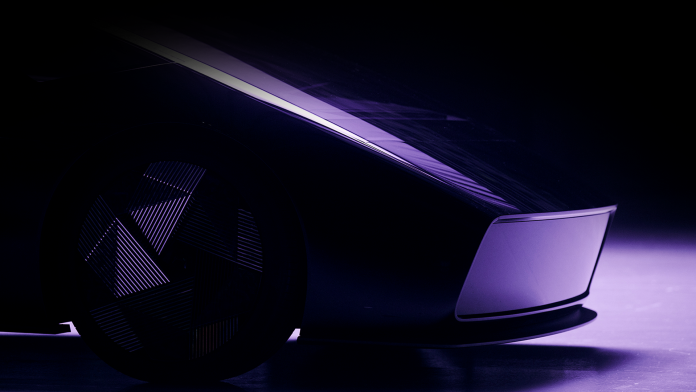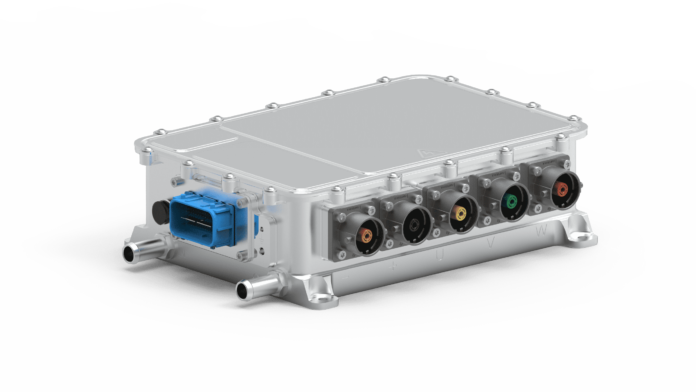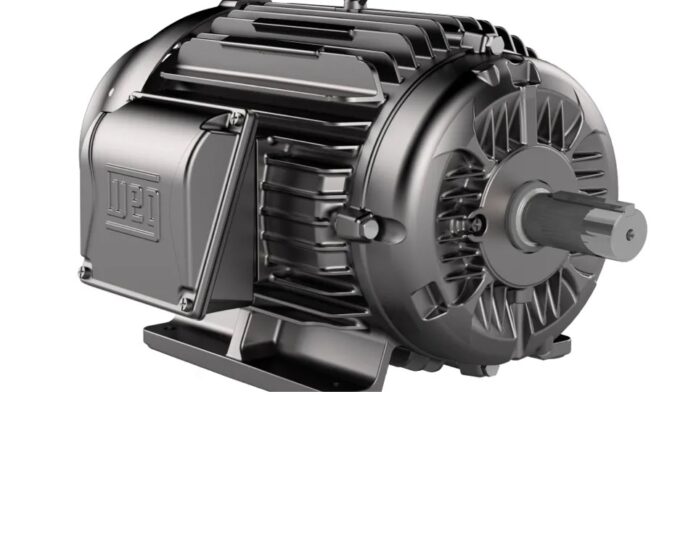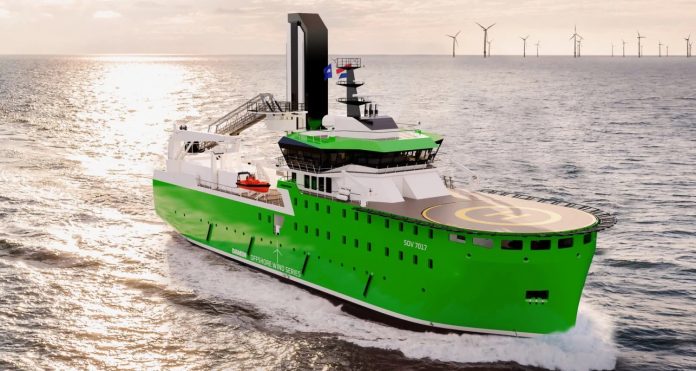At Ulsan, in South Korea, Hyundai Group is building the second factory where only electric cars will be manufactured. The new plant, close to the current one that has been in operation since 1962, will start operating in the first 2026-quarter and produce an electric SUV, Genesis-branded, based on the new eM platform of the Integrated Modular Architecture (IMA) factory.
It is an investment worth 1.53 billion dollars and they estimate that up to 200,000 cars will leave the factory yearly. Advanced manufacturing solutions, developed by Hyundai Motor Group Innovation Center in Singapore, will be used for the new factory. Moreover, artificial intelligence will be exploited to automatically adapt the manufacturing volumes to demands and implementation methods with low CO2 emissions will be used.
“In the last half-century, Hyundai factory at Ulsan has evolved as production line technicians have learnt, created and faced new challenges. Inheriting the expertise of Ulsan factory, which has turned great dreams into reality through the power of people, Hyundai will do its best to become the protagonist in the electrification era, with the pride and the responsibility of creating mobility innovation for people”, so stated Jaehoon Chang, President and CEO of Hyundai Group.
Hyundai, under construction the second factory for electric cars only
What the Uni Wheel of Kia and Hyunday is
The two Korean manufacturers Hyundai and Kia are hugely investing in the studies aimed at the optimization of the usable spaces in the architectures of the vehicles of the future and they have recently presented the Universal Wheel Drive System – Uni Wheel – the “powered wheel”, a traction system that enables greater freedom in the design of electric cars. The primary advantage is the enlargement of the inner space, opening new possibilities and minimizing transmission shafts’ length. A solution particularly suiting special vehicles, like for instance shuttles and those for the transport of people or materials with autonomous drive, like the so-called Purpose Built Vehicles (PBV).
Uni Wheel, for which 8 Hyundai and Kia patents have already been filed in South Korea, USA and Europe, exploits a special planetary gear configuration consisting of a central gear, four pinions on each side connected in series to it and an external ring gear: the power generated by the motor is transmitted to the central gear, which in its turn engages the pinions to rotate the ring, connected to the wheel. Uni Wheel can transmit the power without losing too much in efficiency, irrespective of the wheel motion, and it finds perfect application coupled with electronic pneumatic suspensions able to adjust the vehicle’s height according to the drive situation.
From the University of Malaysia, the concept of “cleanest” engine
«The ‘cleanest’ engine depends on the criteria used to define cleanliness, such as emissions, fuel efficiency, and the type of fuel used», stated Muntasser Al Anbagi, Mechanical engineering University Putra Malaysia, adding: «However, based on current technology and environmental concerns, electric motors in electric vehicles (EVs) are often considered among the cleanest engine types, especially when their entire lifecycle is considered».
Why? At first, Zero Tailpipe Emissions: electric motors produce no tailpipe emissions, which is a significant advantage in reducing local air pollution, especially in urban areas. Other factors are efficiency: electric motors are more efficient than internal combustion engines (ICEs) because they convert a higher percentage of electrical energy from the grid to power at the wheels.
Then, there is the matter of using renewable energy sources: when powered by renewable energy sources like solar or wind, electric vehicles contribute very little to greenhouse gas emissions. The overall environmental impact of EVs improves as the electricity grid becomes greener.
Electric vehicles, besides, often use regenerative braking, which recaptures energy that would otherwise be lost and improves overall efficiency. Electric motors operate much more quietly than internal combustion engines, contributing to less noise pollution. «In comparison, newer technologies like hydrogen fuel cells and advanced hybrids also show promise for clean transportation, but they currently face challenges in infrastructure, cost, and technology maturity. As technology and infrastructure evolve, the definition of the cleanest engine may change. For now, electric motors, particularly in EVs using renewable energy sources, are widely regarded as one of the cleanest options available».
The new EV range by Honda incoming
Honda has set the target of reaching the carbon neutrality of all products and all activities within 2050. In this course, is framed the new range of electrified vehicles for the global market that they will present in the occasion of the next edition of Ces, staged in Las Vegas from 9th to 12th January 2024. There is much expectation for the NEW models of the global Ev range and for the technologies addressing electrification.
In about one month, Toshihiro Mibe, president and Ceo of Honda Motor, and Shinji Aoyama, director, global evp and executive vice-president of Honda Motor will illustrate Honda’s vision for a society based on the circulation of electrified vehicles. The brand is carrying out its activity on the base of its global slogan: The Power of Dreams – How we move you. This slogan transmits the message that Honda will create products and services for mobility that will allow people “to transcend various constraints like time and place” and “to enhance their skills and possibilities”.
COP28, competitive Italian chain in the supply of electromechanical technologies, including electric motors
ANIE Federation has been guest of ICE Agency for the first time at COP28, bringing the best of green technologies. The Federation of the Italian electrotechnical and electronic industry, which joins Confindustria, intervened in the workshop “Sustainab-Italy: Italian proposals for a greener future” organized in the Blue Zone of COP28.
“With 7.3 billion Euros of overall turnover, and an export share exceeding 40%, the Italian electrotechnical and electronic industry for renewable energies includes leader manufacturers from the point of view of technologies, designers, installers and service providers. Almost 80% of the manufacturing value comes from SMEs. Every year the exports of Italian technologies reach over 100 Countries. Backed by the manufacturing tradition and with a high innovation level, the Italian chain is competitive in the supply of electromechanical technologies for electric infrastructures: boards, transformers, motors and cables, up to protection systems, cybersecurity and other technologies that share in the implementation of a smart network”, ANIE writes in a press release.
Spoiler: with the support of ICE Agency Office in Dubai, in April 2024 ANIE will organize for the eleventh year the Italian Hall at the Middle East Energy in Dubai, the most important event dedicated to the energy sector in Middle East, where Italy Hall represents one of the most significant national participations in the exhibition.
McLaren Applied and Electric Aviation Group for high-performance inverters and motors
Electric Aviation Group Ltd (EAG) and its Electric Propulsion Subsidiary, Hydrogen Hybrid Electric Propulsion Systems Ltd (H2EPS) are driving forward these technological advancements collaborating with industry leaders such as McLaren Applied to deliver application specific powertrains consisting of e-motors, power inverters and control systems resulting in a unique, optimised system for each application. The resulting Ultra-lightweight, Advanced, Electric Propulsion Systems herald a new generation of electric vehicle propulsion delivering a superior user experience. McLaren Applied will be supporting an EAG led consortium that has been awarded an APC (Advanced Propulsion Centre) ARMD2 UK government grant for Project LEAP (Lightweight Electric Automotive Propulsion). The aim of the project is to develop an ultra-lightweight advanced electric motor, optimised for McLaren Applied’s technologically advanced IPG5 800V silicon carbide inverter. The project focuses on pushing the boundaries of what is possible with Hardware, Software and System optimisation.
The venture will involve collaboration between Electric Aviation Group Ltd (EAG), its subsidiary Hydrogen Hybrid Electric Propulsion Systems Ltd (H2EPS) and University of Nottingham (UoN), working with McLaren Applied to develop a new generation electric propulsion system for high performance and luxury electric vehicles, reducing weight, extending range and delivering a new and better driver experience to rival that of the internal combustion engine. A prototype is due to be unveiled in September 2024, with the intention to commercialise the technology beyond that date.
Paolo Bargiacchi, Head of Product, Electrification, at McLaren Applied said «In order to maximise the potential benefits from our 800V SiC IPG5 hardware, we have been focused on developing our motorsport-honed motor control software to deliver advancements in fine motor control. This provides OEMs with the ability to differentiate the driver experience by tailoring the powertrain attributes to their brand – whether that be greater driving engagement, or unrivalled levels of refinement. We are excited that this funding will make the most of these capabilities, delivering an optimised high-performance inverter and motor system».
Weg releases its range of synchronous electric motors
It is called W23 Sync+ the new line of synchronous electric motors by weg manufacturer that offers a broad range of motors that satisfy IE5 and IE6 efficiency levels. “With the same power/casing ratio as induction motors, it is easily interchangeable and it offers the highest performances at all speeds, sharing in the reduction of CO2 emissions and notably increasing the investment return, Weg explains. Moreover, they illustrate that the hybrid motor technology combines the best technical characteristics of permanent magnet motors (PM) and of synchronous reluctance ones (SynRM) and it will supply higher efficiencies at all speeds versus induction motors. Besides providing high efficiencies at constant torque on a broad speed range without needing forced ventilation, the new motor can also boast a higher power factor than synchronous reluctance motors.
Marek Lukaszczyk, marketing manager of WEG for Europe and Middle East declared: “We are looking at the future with W23 Sync+. IE5 and IE6 models by far exceed the current European regulation about the eco-compatible design, which is currently demanded to satisfy IE3 or IE4 standards. WEG offers the broadest range of motors that meet IE5 and IE6 efficiency levels on the market.”
How Infinitum is innovating the electric axial flux motor
Aircore Mobility is the electric axial flux motor by the Texan Infinitum, designed to achieve higher efficiency by decreasing the use of copper and to be adapted to various vehicle sizes, without affecting performances.
The core of everything is the innovative technology that replaces the conventional copper-wound iron stator with a stator of the printed circuit board, the PCB. The use of the PCB stator implies a lighter weight and a lower demand for raw materials, assuring – according to Infinitum – 10-time higher reliability, with significant reductions of mechanical losses, noise and vibrations. The Aircore Mobility powertrain exploits a design that increases by even five times the current density in comparison with a conventional liquid-cooled electric motor.
“The Aircore EC provides the market’s most comprehensive range of power and frame sizes along with IoT capabilities, bringing smart motor technology to a wide range of HVAC and industrial applications”, states Infinitum.
Full electric ship charged with wind energy
The Dutch company Damen has recently presented its full electric SOV 7017 ship that can be charged while it is in motion, exploiting the existing offshore wind turbines. The 70-metre-long ship hosts 60 cabins and in the full electric variant it is provided with LFP batteries for overall 15 MWh, while the other version, equipped with diesel engine, has a 10-MWh battery.
The Dutch shipbuilder relies on 36 yards spread all over the world and has developed this innovative ship that can be charged even when it is in operation, connecting to the towers of the offshore wind turbines and then adding a 4-MW charger, already developed together with MJR Power & Automation.
Test completed for the eJet by Duxion Motors
Duxion Motors has successfully accomplished the ground test of its patented eJet motor: the motor prototype has had a positive outcome at both low and high speed. Rick Pilgrim, President and CEO of Duxion Motors declared: “The eJet motor is the first rim-driven jet propulsion motor in the world, able to match the existing jet motor thrust but without emissions. The eJet motor is new, scalable and can be configured to power a large base of airframes. We never doubted this day would come. Our confidence is rooted in the years of research, the innovation and quality of the design, and the depth of expertise and relentless passion within the Duxion team,” adds Mr. Pilgrim. “This is only the beginning.”
The world’s fleet of over 30,000 jet-powered aircraft account for 2.5% of global CO₂ emissions. The eJet motor replaces traditional, fossil fuel burning engines, enabling the transition to zero-emissions flight for jet aircraft. The eJet is also quieter than combustion jet engines, which will enhance passenger comfort and impactfully reduce noise pollution for the global community.










